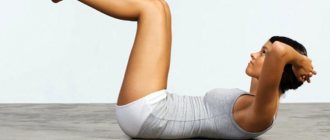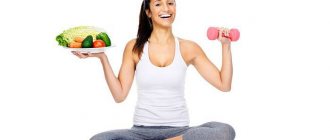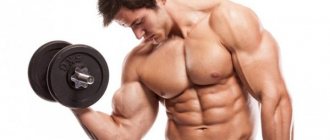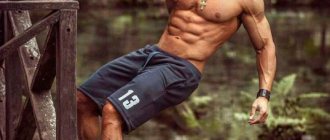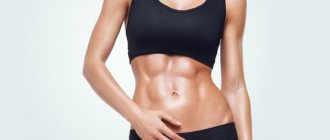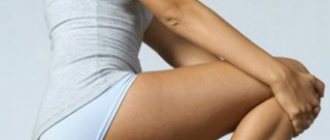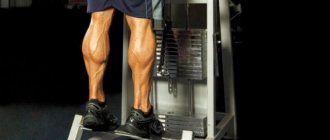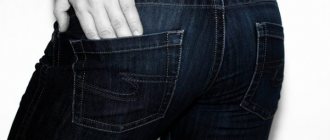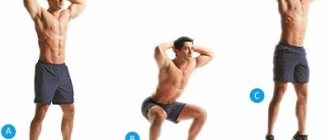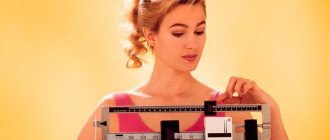A little anatomy
First, let's get acquainted with the structure of the lower leg. The lion's share of it is occupied by the gastrocnemius muscle, consisting of two heads - medial and lateral. It is their development that gives the main volume of the lower leg. Below the gastrocnemius is the soleus muscle - it is flat but wide, so its development can add width, both in side view and in frontal positions.
An important difference between the gastrocnemius and the soleus is that the former crosses the knee joint and is attached to the femur, while the soleus does not cross the knee joint and is inserted within the tibia. This means that the calf muscle is maximally activated in a standing position, but is virtually inactive when the leg is bent at a 90-degree angle. At these moments, the soleus muscle takes over the baton.
From this anatomical structure of the lower leg follow the specifics of training the gastrocnemius and soleus muscles - the gastrocnemius is trained in a standing position, and the soleus in a sitting position, but more on that later.
In addition to the triceps surae, the extensor digitorum, peroneus longus, and tibialis anterior muscles are also present on the anterior surface. To directly train them, you need a special simulator, which is so rare in gyms that you can forget about it. If you have such a machine in your training room, I strongly recommend using it more often.
General recommendations
In order for calf exercises at home to be as effective, productive and safe as possible, it is important to follow medical recommendations:
- Before starting tasks, warm up your muscles and joints with your hands using rubbing massage movements.
- When moving (during exercise), try to maintain the maximum amplitude.
- The load should be varied, just like the exercises, in order to prevent addiction, which reduces the effectiveness of training for the muscles.
- When doing calf raises, try to place most of your weight on your big toes, not your heels. This will contribute to the rapid and high-quality development of muscle mass.
- Avoid overload. It is recommended to do exercises for the calf muscles no more than 3 times a week so that the muscle fibers have time to recover. Increase the load on the muscles gradually, since their overstrain is fraught with unpleasant consequences, convulsive syndrome.
- During exercise, keep your back straight, watch your posture and breathing.
- After completing the main set of exercises, you should definitely stretch your lower leg muscles. To do this, just step back, fix your heel on the floor and tilt your torso forward.
- Exercises for the muscles of the lower extremities should be performed smoothly, slowly, avoiding jerks and sudden movements.
- The main load should be placed on the soleus muscle and the peroneus longus - these groups are responsible for the slimness of the legs, their fit and attractiveness.
Exercises for the calf muscles
We already know that the calf muscles are most active when a person is in a standing position and his legs are straight. This leads to the main condition for training the calf muscles – straight legs in a standing position.
Standing calf raises
The most popular and, so to speak, basic calf exercise is standing calf raises . For this exercise, both a special machine and a Smith machine are suitable.
You can use a sock holder or not, but I recommend using it. The height of the stand should be such that at the lowest point the heels never touch the floor. It is not necessary to specifically go as low as possible; a slight stretch at the bottom point is quite enough. The stand allows you to increase the range of motion, which is very small in lower leg exercises.
The legs at the knee joint can be either absolutely straight or slightly bent. You should keep your back straight; you should not push your pelvis too far back. In general, the bar on your shoulders should be in line with your toes.
Standing calf raises can also be done with dumbbells. In this embodiment, you need to hold onto a support with one hand to maintain balance, and hold a dumbbell in the other. Each shin is worked alternately.
Bent-over calf raises (“donkey”)
An interesting and effective exercise is standing calf raises or the so-called “donkey”. To perform this exercise, you need to tilt your body forward, leaving your legs straight. A significant disadvantage of this exercise is that the load on the calves is not great enough and there is nothing left to do but put a partner on your back and lift with him. But even with a partner, the load may not be enough. Therefore, a great substitute for this exercise would be the toe press on a leg press machine. The advantages are obvious - there is no load on the back and wide adjustment of the degree of load. Such machines are available in almost every fitness club.
Tips from the experts
Professionals often argue that the development of the calf muscles is often influenced by genetics. For some, they have a more developed form by nature, while others have to work hard and hard to increase them even a little. This is due to the structural features, as well as the fact that such muscles are constantly under tension.
Exercises for the calf muscles, according to athletes and coaches, should be performed on the day of leg training, preferably at the end, since such muscles will also receive a certain load when performing other movements, such as squats or lunges.
Ekaterina Usmanova, fitness bikini
The famous “bikinist” believes that you should not pay too much attention to the calf muscles, since they work indirectly when performing other movements, but she considers one or two exercises a day to be necessary. Best of all, in her opinion, are calf raises, as well as movements in special machines designed to develop the calf muscles.
Anastasia Gurina, body fitness
World champion in body fitness Anastasia Gurina says that exercises for this part of the body should be included in any program, but special attention is paid to the calves when the rest of the body has already been brought to the approximate shape that the athlete desires.
If the goal is to reduce fat in this area, then it is better to pay attention to general weight loss exercises, such as cardio and various multi-joint strength movements.
Dmitry Yashankin, bodybuilder
This athlete argues that beginners should not place special emphasis on the calves, focusing on the development of larger muscle groups that provide greater returns from training. He believes that at the initial stage, the load on the calves, which they receive during squats and other leg exercises, as well as running, is enough, and then you can move on to isolated movements.
Exercises for the soleus muscle
To load these muscles, you need to bend your leg at the knee joint 90 degrees and rise on your toes. A special simulator is used for these purposes, but if it is not available, then the same Smith simulator will do. If you don't have one, you can use free weights, but you may need a safety partner. It is necessary to load the barbell with weights in advance, sit on the edge of the bench, place your toes on the stand and place the barbell on top of your thighs, closer to your knees. Most likely, heavy weight will cause discomfort in the hips, so I recommend placing a towel or weightlifting belt under the barbell. You can do it easier - place a dumbbell on the upper thigh, butt down. You can work both legs at the same time, or alternately.
How to pump up a man's calves at home?
A banal modern problem - how to pump up a man’s calves at home? This is quite possible if you use weighting elements along with the exercises. However, you won’t get any visible results even if you train all day long. It is better to tune in for at least a month, although you will still feel the first results within a few days.
How to pump up a man's calves? Raise yourself onto your toes in a seated position with dumbbells in your hands.
Let's look at variations on this type of exercise.
- Lifting while sitting on one of the toes. You should sit on a chair. Place one foot on top of the other and place a weight on your foot, such as a water bottle or dumbbell. Raise your lower leg as high as possible. Thus, hold your legs for a couple of seconds and return to the starting position. After the required number of times, the legs need to be changed.
- Lifting onto your toes, using a chair as support. Here you will need special leg weights. Turn the chair to face you. You should lean your hands on it and lean forward slightly. And then the toe raises begin.
- How to pump up a man's calves? Calf raise using one leg and a chair as support. You need to lean your hands on the back of the chair and lean forward slightly. Cross one leg over the other, placing the toe on the heel. Next you should rise and fall on your toes. Then switch legs and do the same.
- To pump up the inside of your calves, use half-finger raises, as well as a jump rope, just like the beautiful ladies.
- The following exercise is often used for the inner part of the calf muscles. You should rise on your toes and rest your hands on your sides. Lie on a horizontal surface on your stomach. And then use the foot of one leg to reach your butt. Then perform the same actions on the other leg, and then both together. The exercise should be performed in several approaches.
Well, the main point for everyone. Is it possible to pump up your calves as much as you would like? This is only possible with proper and regular training. If you skip them, it is better not to count on a long-term positive result.
Video on how to pump up calves for men at home
In contact with
Features of lower leg training
On the Internet you can find information that supposedly the calf muscles are very durable, consist of “slow” fibers and they need to be trained exclusively with many repetitions with light weight, and large weights are useless here. Actually this is not true. The lower leg is both a resilient and strong muscle group.
Yes, most people's calves are made up primarily of slow-twitch fibers, but that doesn't mean they should only be trained in a high-rep style. If the shin is sharpened for many repetitions in everyday life, then why load it in the same style in the gym? Why can’t you use the opposite type of stress – heavy weights? Of course, this can and should be done.
When using heavy weights, you need to remember that the spine, ankle and Achilles tendon will experience a much greater load than when working with small weights, especially when standing. With heavy weights, it is not recommended to lower yourself too much at the bottom of the exercise, as this can lead to injury.
Seated calf raises avoid excessive stress on the spine, but you still need to be careful with the ankle. In seated lifts, you can work with heavier weights more often, the main thing is that the movements are smooth and controlled.
You can load the lower leg relatively more often than other muscle groups, although in this case everything depends on the volume of the load. It is perfectly acceptable to work your lower legs three times a week if you only used one exercise in each workout. For example, if on Monday it was standing calf raises, then on Wednesday you can perform seated calf raises, and on Friday calf presses. All 4-5 approaches, the number of repetitions can also be varied. For example, calf raises can be done for 8 reps, and standing raises and calf presses can be done for 12-15 reps.
If the shin lags behind, then there is nothing left but eternal specialization on them. This means that at the beginning of your workout you should hit your calves for 4-5 sets of 1-2 exercises, and only then move on to the main workout. Here you will have to choose - either load them powerfully and harshly, or moderately, but more often. I recommend the second option as a basic one. If you really want hardcore, then you can use drop sets. After a good warm-up, you load a machine or barbell with a heavy weight that can be lifted 8-10 times, perform a set to failure, quickly drop the weight by 25% of the original, do another set for the maximum number of repetitions, then drop the weight again by 25% and again do as many reps as you can. This all adds up to one approach. I recommend doing no more than 3-4 such approaches during a workout.
What function do the calf muscles perform?
When talking about what function the “calves” perform, we need to delve a little deeper into the anatomy. They form the back of the lower leg, from the knee to the Achilles tendon. They are divided into the gastrocnemius and the soleus , with the second being much larger (occupies 2/3 of the lower leg) and located under the first. Both perform the very important function of flexing and extending the foot. They consist of “slow” fibers, that is, more dense and hardy. In this regard, it is very difficult to strengthen the calf muscles at home, since they have a large margin of strength and firmly resist any load. That is why they, like the forearms, are classified as so-called “stubborn” muscles .
Interesting trick
There is another interesting training technique that will help you “break through” a stubborn shin. This is a rest-pause. Personally, I use this technique as the last set of the calf exercise. After completing 4 sets of 10 reps, I step off the stand, rest for 15 seconds, then get back on the stand and do a few reps, usually about seven. Then I rest again for 15 seconds and repeat everything again until the number of repetitions drops to three. Since the lower leg is a very durable muscle group, the number of such approaches will be quite large. I need 6-7 sets to get the number of reps down from seven to three. After such an execution, the shin feels pleasantly sore for several days.
How to pump up a girl's calves at home?
Women's muscles differ from men's in that they have longer fibers. This means that the question of how to pump up a girl’s calves is not so simple. Girls are recommended to start with lifts and “springs”. They should be performed in several approaches from 30 to 100 times.
So, what is recommended for pumping up calves for girls?
- To perform lifts, stock up on a small stand. We stand on our toes, leaving our leg without support. Up on your tiptoes - then down to try to touch your heels to the floor. Exercise is good for both health and aesthetics.
- Springs are similar to sit-ups, but should be performed on the floor. This method of how to pump up a girl’s calves at home works quite well, but you can use dumbbells to enhance the effect. You need to rise high and slowly on your toes, and then go down with your heels to the floor, then lift again. A more complicated version is alternate execution on one and the other leg.
- If you don't have much time, you can practice while doing normal things, for example, tiptoeing around the house. Small checkers and straight knees are effective during the process.
- How to quickly pump up a girl's calves? Using stairs is a great way to pump up your calves. A more effective option is to hold dumbbells in your hands. Ideally, it is recommended to take stairs whenever possible, including avoiding elevators and transport. The optimal daily number of steps is 10,000.
- Another classic way to pump up your calves is with a jump rope. You should jump until fatigue appears, and for greater effect you can jump from a squat position.6. How to pump up a girl's calves? Walking, jogging and exercise on an exercise bike are suitable.
- Don't forget about stretching. For example, sitting on the floor with one leg on the floor and the other bent. Throw a towel ring over your foot and pull it to stretch the necessary muscle. Stay in this position for 20 seconds and repeat for the other leg.
- Another version of stretching can be done while standing against a wall. You should lean on it and approach the wall with your face. Your feet should be flat on the floor and your body should be straight. If you feel tension, you need to hold the position again for 20 seconds.
Video on how to pump up calves for girls at home
